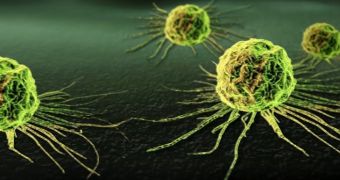Scientist Wei Sun with the Drexel's research center at the Shanghai Advanced Research Institute claims to have figured out a way to piece together cancer tumors in a laboratory. Thus, the scientist says that such tumors can be 3D printed.
In a paper published in the journal Biofabrication this April, Wei Sun argues that, at some point in the not so distant future, it might be possible to use such tumors to gain a better understanding of cancer, maybe even test potential treatment options.
Wei Sun and his colleagues say that, although it has been a while since scientists first created cancer cell and tissue models in laboratories, their 3D tumors have the potential to take cancer research to a whole new level.
This is because, unlike cells and tissues, their tumor models are much more similar to the real ones that come to develop inside people's body. Consequently, they can help shed new light on how cancer tumors work and on how they might be treated.
“Two-dimensional cell culture models are traditionally used for biology study and drug screening. However, two-dimensional culture models can not represent true 3D physiological tissues so it lacks the microenvironment characteristics of natural 3D tissues in vivo,” Wei Sun said in a statement.
“This inherent inadequacy leads to shortcomings in cancer research and anti-tumor drug development. On the other hand, 3D tumor models can represent true tumor 3D pathological organizations and will lead to a new paradigm for cancer study,” he added, as cited by EurekAlert.
In order to create their 3D cancer tumors, the Drexel's scientist and his fellow researchers used a mixture of cervical cancer cells and a hydrogel substance that they fed into a multi-nozzle printer, information shared with the public says.
After being 3D printed in this manner, the cancer cells that survived the process formed tumors whose shape was similar to that of spheres. Despite the fact that tumors in people's bodies have a different surface area, shape, and cellular composition, these models can prove a valuable tool when it comes to collecting more accurate data concerning cancer.
Wei Sun and his colleagues plan to continue their work, and hope not only to create more life-like tumors, but also to find a way to connect them to blood vessels and other tissues.
“Our goal is to take this tumor-like model and make it into a more of an in vivo simulation. And to apply it to study the development, invasion and metastasis of cancer, to test the efficacy and safety of new cancer drugs, as well as the specific therapy for individual cancer patient,” the Drexel's researchers said in a statement.

 14 DAY TRIAL //
14 DAY TRIAL //